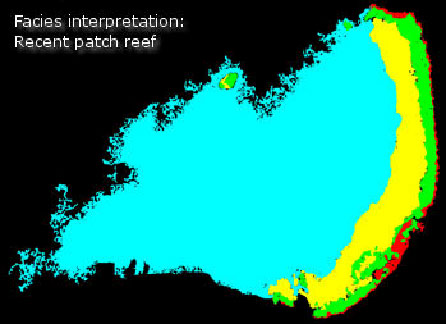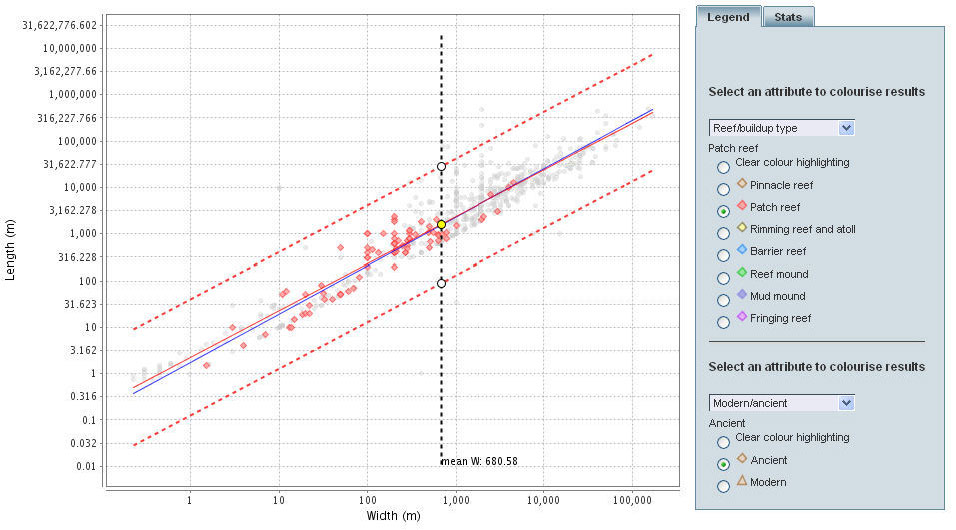Reef and Carbonate Build-up Geometry and Heterogeneity: Analogue Studies for Modelling the Subsurface
The large scale controls on variations in Reef and Carbonate-Buildup geometry are investigated using a recently built database of reservoir geometry analogue data. Within reef complexes reservoir quality of a specific reef type can have a direct correlation to the component primary depositional character. Facies within reefs follow predictable areal patterns or adjacency, resulting from a number of processes influencing reefal growth that include depositional settings, organism type, sea level variation, climate and tectonic setting. The relationship between reef facies and dimensions is explored and linked to geometric form in terms of common descriptors of reef type and carbonate platform setting. Whilst selection of individual (or best fit) analogues for a particular subsurface case can be a useful process, we have taken an alternative approach by building a large database of reservoir geometry analogue data. These analogue data have been attributed with additional descriptors derived from a variety of sources, to include systems tract and reef growth episodes (progradation, aggradation, backstepping stacking patterns), carbonate factory type, and other potential controls on reef growth geometry. The latter include global GIS coverages of tectonic setting and palaeoclimate. As a result, data searches allow creation of a suite of composite analogue data that fit a particular sub-surface case and can allow investigation of the controls on observed geometries. The generation of composite analogue data suites also provides potential to limit case-specific variation and retain a greater amount of inherent variability.
In this case study, a large volume of reef facies data extracted from the public domain, satellite imagery and subsurface data sources have been filtered to investigate the relationship between ancient and modern reef types and platform settings. The results of statistical tests of the data are presented here as plots of a variety of geometrical reef facies parameters (for example length, width, area and thickness). The results illustrate the variability of the geometry of reef facies for a particular reef type through time and within different platform settings.
 Figure 1. Facies interpretation of present day patch reef.
Figure 1. Facies interpretation of present day patch reef.
 Figure 2. Cross plot from database selecting length width relationships of patch reefs.
Figure 2. Cross plot from database selecting length width relationships of patch reefs.
AAPG Search and Discovery Article #90142 © 2012 AAPG Annual Convention and Exhibition, April 22-25, 2012, Long Beach, California
